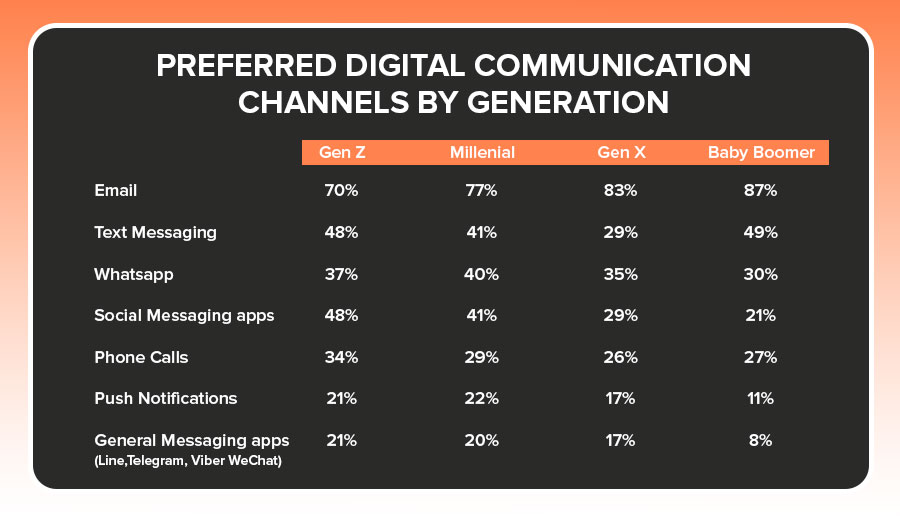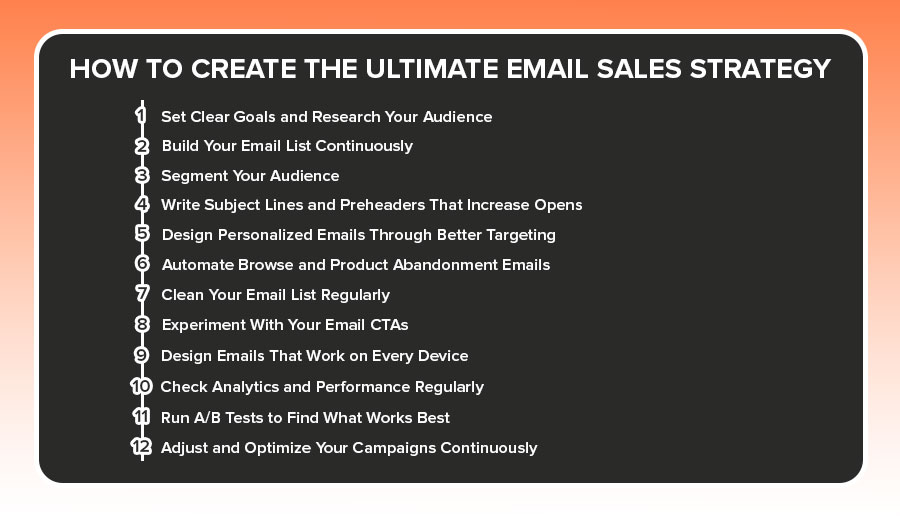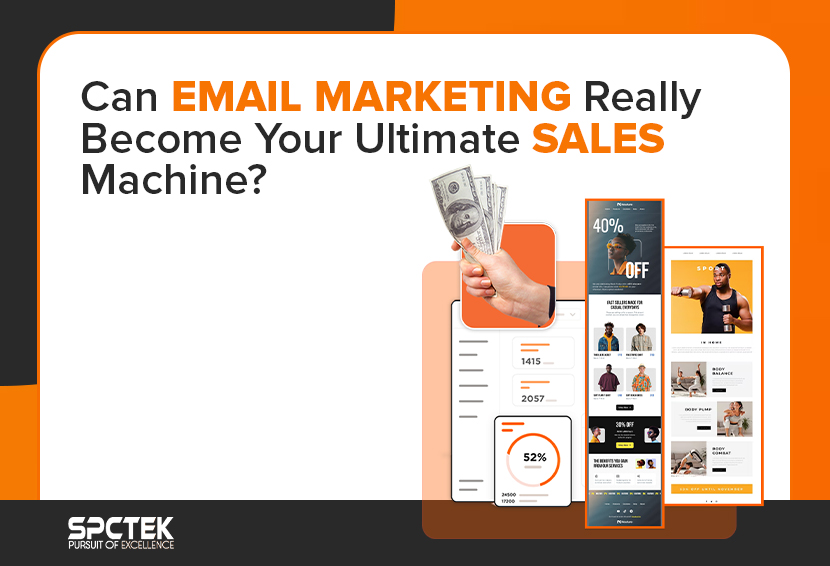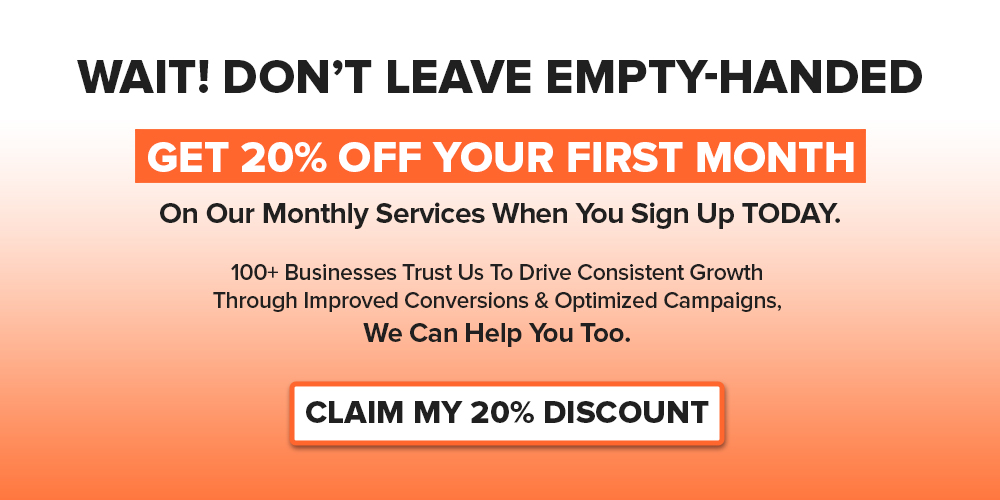Too busy to read? Listen to the article instead.
Email marketing for sales remains one of the most reliable and profitable channels for businesses today. With the right approach, you can unlock the full email marketing sales potential of your campaigns and create the ultimate email sales strategy that drives consistent revenue.
Even as other digital channels grow more competitive and expensive, email continues to deliver strong results because it gives brands direct access to their audience, supports deep personalization, and provides measurable data that shows what truly works. This guide explores why email is still a powerful sales tool and how you can use it to grow your business.
Is Email Marketing Still a Profitable Channel for Sales?
Yes, email marketing for sales is still one of the most powerful tools businesses can use worldwide. It continues to deliver a strong return on investment (ROI), outperforming most other digital marketing channels. Here are some key statistics that prove email marketing’s sales potential.
- Highest ROI: According to Campaigner and other sources, email marketing has an average ROI of $40 for every $1 spent, beating SEO at $22 and keyword ads at $17. This shows how effective and cost-efficient email is when used as a revenue driver.

Source: Campaigner
- Global Reach: Email continues to expand its global reach. According to Statista, there were 4.48 billion email users in 2024, and the number is expected to grow to 4.89 billion by 2027. This growth highlights the massive email marketing sales potential businesses can tap into.
- High Conversion Rates: According to Omnisend, email click-to-conversion rates reached 27.6% in 2024, showing how well email can turn interested subscribers into paying buyers. Email automation sales play a huge role in this success. Even though automated emails make up only 2% of total sends, they generate 37% of all email-driven sales. This shows the true email marketing sales potential that comes from using behavior-based automation rather than relying only on one-off campaigns.
- Fast-Growing Revenue: The financial opportunities for email marketing for sales are even bigger. Statista predicts that worldwide email marketing revenue will grow from $9.7 billion in 2024 to $37.5 billion by 2032, marking an increase of 286.6%. This growth reflects how email continues to strengthen its role as an email as revenue driver, especially as AI and personalization tools improve.
- Preferred Communication Channel: According to Twilio, email marketing is the preferred communication channel for 79% of consumers worldwide. Preferences do vary by age and region, which makes segmentation essential. By tailoring messages for different groups, businesses can get the most out of email marketing for sales.

Key Reasons Email Marketing Remains a Top Revenue Driver
Email marketing is a top revenue driver due to its high ROI potential, direct deliverability, cost-effectiveness, and scalability. Email marketing is also a reliable sales channel because you can track its performance in detail and customize strategies based on what works. The following are the key reasons why email marketing has an advantage over other marketing channels:
1. High ROI That Keeps Delivering
Email marketing continues to outperform most digital channels when it comes to return on investment. According to Campaigner and other sources, email marketing has an average ROI of $40 for every $1 spent. Because it’s affordable, highly targeted, and proven to convert, email remains one of the strongest email as revenue driver strategies for businesses of all sizes.
2. Email Reaches Your Audience Better Than Anything Else
One of the biggest strengths of email marketing for sales is that it gives you direct access to your audience. Every message goes straight to your subscribers’ inboxes, no algorithms, no pay-to-play blocks. And because people choose to sign up for your list, they’re already inviting you into their digital space. That means your messages are much more likely to be opened, read, and clicked.
3. Personalization That Scales Effortlessly
With email, personalization becomes simple, even when sending thousands of messages. You can tailor content based on user behavior, interests, and life cycle stages to make every message feel like a personal conversation.
3. Email Helps You Build Strong, Lasting Customer Relationships
Email gives you a direct way to connect with customers by sharing helpful updates, offering exclusive deals, and keeping them entertained. With consistent communication, you build loyalty and encourage repeat purchases, which are key factors in long-term business growth.
4. Cost-Effective and Efficient (Especially With Automation)
Email marketing remains one of the most budget-friendly channels compared to paid ads or social platforms. But the real power comes from email automation sales. With automated workflows like welcome series, birthday offers, abandoned cart reminders, or follow-up sequences, you can stay in touch with customers naturally. This makes email marketing for sales both efficient and incredibly scalable.
5. Allows Data-Driven Decision Making
Email doesn’t just communicate, it informs. Metrics like open rates, clicks, conversions, and unsubscribes show exactly what’s working. This insight lets you adjust your messaging, improve future campaigns, and maximize results. Few marketing channels offer this level of real-time performance feedback.
6. A Reliable Way to Drive Traffic Back to Your Website
Every email you send is an opportunity to bring subscribers back to your site. Whether you’re promoting a blog post, product page, or event, strong calls-to-action encourage readers to explore more of what you offer and engage with your brand.
7. Perfectly Suited for Mobile Users
With most people checking their inbox on their phones several times a day, emails are always within reach. By using mobile-responsive designs, you ensure your messages look great and are easy to act on, no matter the device.

8. You Own the List as a True Long-Term Asset
Your subscriber list is something you fully own. Unlike social media platforms where algorithms control reach, your list is yours to segment, nurture, and communicate with at any time. This ownership protects your business from external changes and keeps your messaging consistently in front of people who care.
9. A Flexible Channel That Fits Any Business
Email works for every industry, whether you’re in e-commerce, B2B services, education, or event marketing. From surveys and drip campaigns to product launches and flash sales, email can be adapted to support nearly any goal, making it an incredibly versatile email as a revenue driver.
Also Read: Why Email Marketing Matters For Small Businesses: A Guide
How to Create the Ultimate Email Sales Strategy?
Turning email into a sales tool requires a strong strategy based on marketing goals, target audience, data, testing, and continuous optimization. You need to have clear goals and a deep understanding of your target audience’s needs and behavior. List segmentation, personalization, automation, and performance metrics are also a core part of a successful email sales strategy.

1. Set Clear Goals and Research Your Audience
A successful email sales strategy begins with determining goals. Define what you want to achieve, such as growing engagement, increasing conversions, or building customer loyalty. Create customer personas to understand their interests, goals, and pain points. Use methods like customer surveys, analyzing competitor strategies, and reviewing your own engagement data to gather insights.
2. Build Your Email List Continuously
A strong email sales strategy starts with steady list growth. The more qualified subscribers you attract, the more opportunities you have to boost sales with email. Use sign-up forms, lead magnets, website pop-ups, and social media promotions to bring in new contacts consistently. A growing list ensures you always have fresh prospects moving through your funnel.
3. Segment Your Audience
Group your subscribers based on criteria like behaviour, demographics, purchase history, engagement level, or customer lifecycle stage. This allows for more relevant and personalized messaging.
4. Write Subject Lines and Preheaders That Increase Opens
Your subject line is the first thing subscribers see, and it determines whether they open your email or ignore it. Keep subject lines clear, relevant, and curiosity-driven. Support them with strong preheaders that add context. Higher open rates give you more chances to turn email into a sales tool, helping drive stronger engagement throughout each campaign.
5. Design Personalized Emails Through Better Targeting
Personalization is one of the biggest advantages of email marketing for sales. Use customer behavior, purchase history, and preferences to send content that feels tailored to each subscriber. Targeted emails increase trust, improve engagement, and move people smoothly toward buying. This level of personalization is essential for achieving ultimate sales via email.
6. Automate Browse and Product Abandonment Emails
Behavior-based automated triggers are highly effective for increasing email sales. Automated triggers like browse and cart abandonment emails recover lost revenue by reminding shoppers about what they viewed. These triggered messages are a key part of email automation sales, converting warm interest into actual purchases with minimal effort.

7. Clean Your Email List Regularly
A healthy list leads to better deliverability and more accurate results. Remove inactive subscribers, bounced emails, and outdated contacts on a routine basis. This improves open rates, keeps your sender reputation strong, and supports your overall email sales strategy by ensuring you’re speaking to truly interested people.
8. Experiment With Your Email CTAs
Your call-to-action (CTA) is what turns interest into revenue. Test different CTA placements, colors, wording, and styles to see what motivates subscribers to take the next step. Small changes can significantly boost sales with email, especially when paired with engaging copy and strong offers.
9. Design Emails That Work on Every Device
Almost 41 percent of the emails are opened on mobile phones. That means your email design must be responsive and easy to read on any screen. Use tools or templates that adjust your layout for phones, tablets, and desktops. A mobile-friendly design ensures that your email marketing for small businesses delivers a great experience every time.

Source: Forbes
10. Run A/B Tests to Find What Works Best
A/B testing allows you to make data-backed decisions instead of guessing. Test subject lines, images, layout, CTAs, send times, and offers. Over time, these insights help you refine your strategy, improve subscriber engagement, and drive ultimate sales via email with greater precision.
11. Check Analytics and Performance Regularly
Data is your guide to better results. Track open rates, click-throughs, conversions, unsubscribes, and revenue performance. Analyzing these numbers helps you understand what’s working and where improvement is needed. This ongoing evaluation is essential for turning email into a sales tool that performs consistently well.

12. Adjust and Optimize Your Campaigns Continuously
Email success grows over time through constant refinement. Use your analytics and test results to adjust frequency, content style, segmentation, and automation triggers. Continuous optimization keeps your campaigns fresh and effective, allowing you to boost sales with email month after month.
Email Marketing Case Study: How a Skincare Brand Increased Email Revenue by 55%
A recent case study highlights how powerful email marketing can be for sales. A personal care and skincare brand faced a major challenge: their email channel was contributing only 20–25% of total revenue, and their existing email platform wasn’t optimized to drive sales. Their flows were underperforming, segmentation was weak, and their overall email strategy wasn’t producing the ROI they needed.
SPCTEK revamped the brand’s approach by segmenting the audience, optimizing automated flows, updating email design and messaging, and running consistent A/B tests. These changes unlocked the brand’s true email marketing sales potential, and the results were significant:
- 55% growth in email-driven revenue
- 59% more total orders
- 40% increase in site traffic from email
- 16%+ conversion rate
This case shows how a targeted and well-managed email strategy can completely turn emails into sales, even for brands that previously struggled to see strong results.
Conclusion
Email marketing for sales continues to be a top-performing channel for businesses that want dependable revenue growth. With its strong ROI, global reach, and excellent conversion potential, email offers massive email marketing sales potential when supported by the ultimate email sales strategy.
By focusing on list growth, segmentation, personalization, automation, testing, and continuous optimization, you can build a system that consistently turns subscribers into buyers.
Got More Questions?
A: Yes. With the right strategy, email marketing can consistently generate revenue by nurturing leads, converting interested subscribers, and driving repeat purchases.
A: Use segmentation, personalization, automation, strong subject lines, and clear CTAs. Combine these with regular testing and optimization to maximize results.
A: Email provides direct access to customers, supports highly targeted messaging, and offers measurable performance data. This makes it easier to deliver the right message to the right person at the right time.
A: Welcome series, abandoned cart emails, product recommendations, limited-time offers, re-engagement campaigns, and personalized follow-ups are some of the most effective techniques.
A: Results vary by industry, but many businesses see 5 to 30 percent of total revenue coming from email. With optimized automation and segmentation, this can increase significantly.
A: Sending too many emails, poor segmentation, weak subject lines, lack of testing, outdated lists, and overly promotional content can hurt performance and reduce conversions.
A: Email is owned, targeted, and cost-effective. Unlike social media or ads, it avoids algorithm limits and high costs, offering consistent reach and better long-term ROI.





